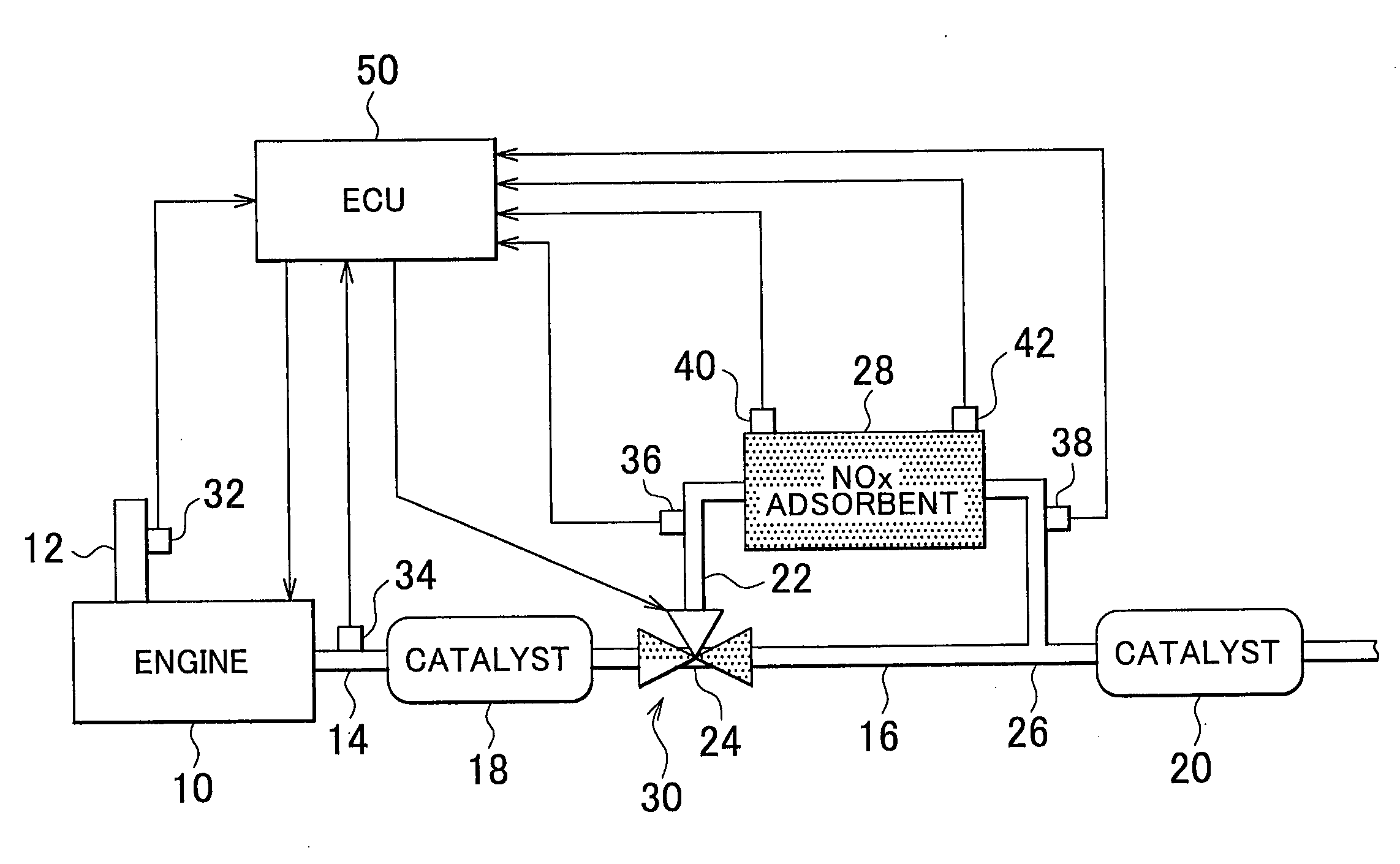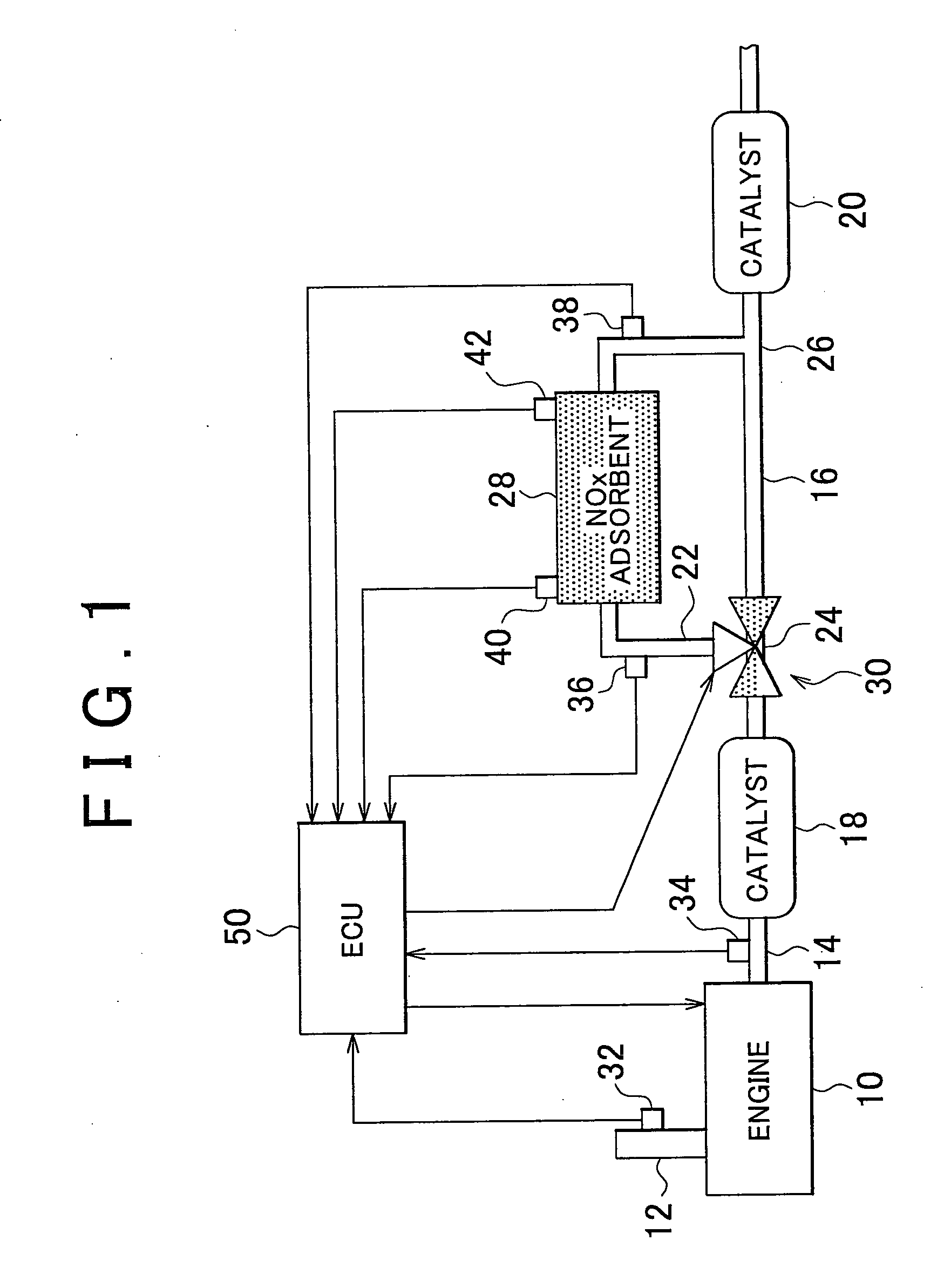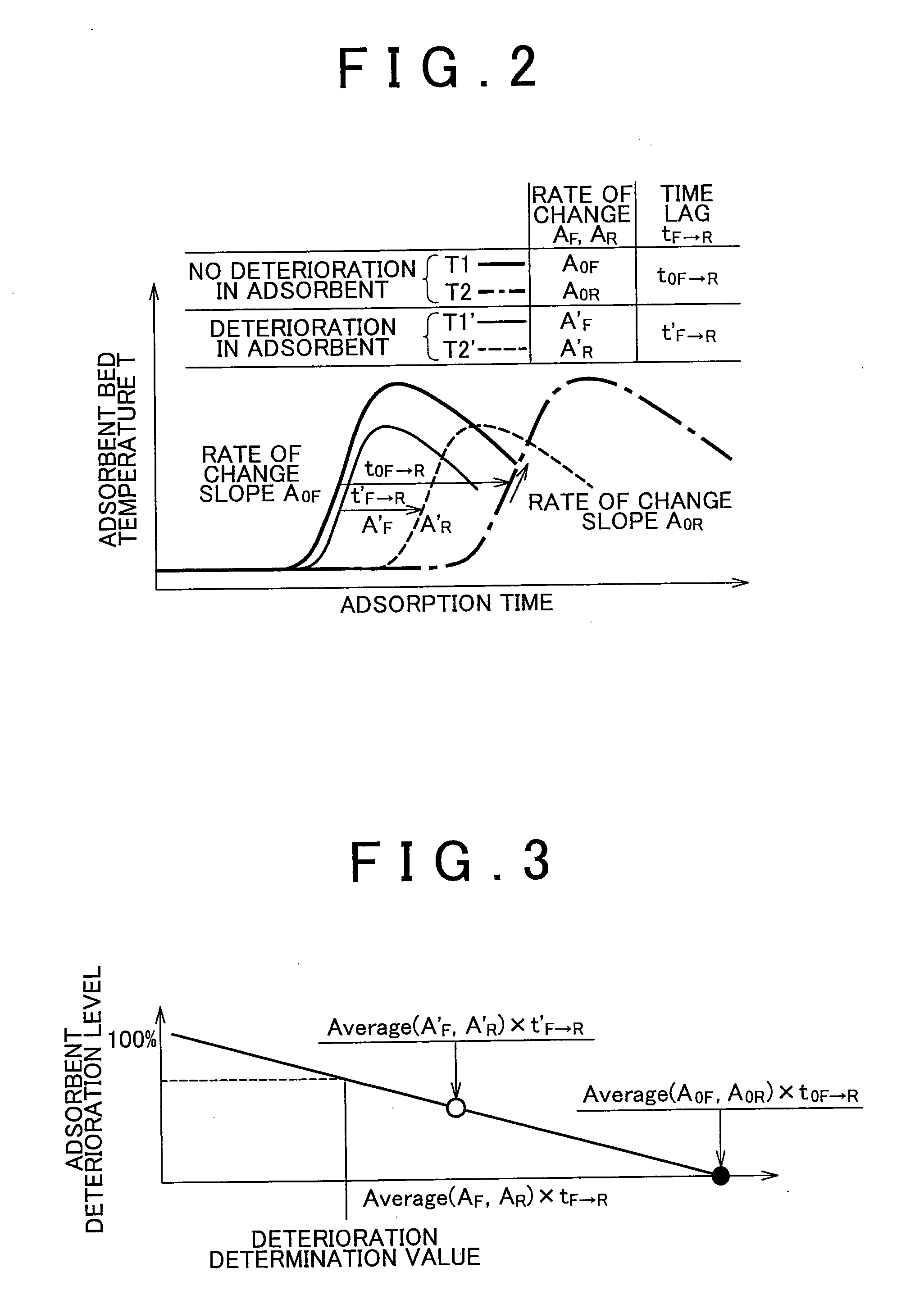Exhaust emission control system of internal combustion engine
- Summary
- Abstract
- Description
- Claims
- Application Information
AI Technical Summary
Benefits of technology
Problems solved by technology
Method used
Image
Examples
second embodiment
[0128]In the second embodiment, the invention is applied to, for example, a system (which will be called “exhaust purge type system”) in which NOx (purge gas) desorbed from the NOx adsorbent 28 joins or flows into the exhaust system. However, the invention is not limited to this arrangement, but may also be applied to, for example, a system (which will be called “EGR purge type system”) in which purge gas is recirculated into the intake system. The EGR purge type system is provided with a flow meter for detecting the flow rate VEGR of purge gas recirculated into the intake system. In this system, the total amount of heat HEGR for use in determination on permanent deterioration may be calculated according to the following equation (3), using the history VEGR(i) of the flow rate of purge gas.
HEGR=∫0tVEGR(i)·{Tin(i)-Tout(i)}tΛ(3)
[0129]In a composite purge type system in which the exhaust purge type system and the EGR purge type system are combined together, the total amount of heat HAL...
first embodiment
[0139]In the routine as shown in FIG. 13, the ECU 50 determines whether permanent deterioration occurs in the NOx adsorbent 28 (step 300), by using, for example, a determination method similar to that of the The result of determination obtained in step 300 is a provisional one (prior to being corrected). Then, the ECU 50 determines whether permanent deterioration occurs in the water adsorbent 70 (step 302), by using the same method as that of step 300.
[0140]Next, the ECU 50 calculates a difference between the permanent deterioration level of the NOx adsorbent 28 and the permanent deterioration level of the water adsorbent 70, or the ratio of the permanent deterioration levels of these adsorbents 28, 70, as a final determination parameter (step 304). Then, as in the first embodiment, the ECU 50 determines whether the parameter obtained in step 304 is equal to or larger than a predetermined deterioration determination value (step 306), and determines the presence or absence of perman...
third embodiment
[0143]In the third embodiment, the auxiliary adsorbent takes the form of the water adsorbent 70 by way of example. However, the auxiliary adsorbent of the invention is not limited to the water adsorbent adapted to adsorb water, but may be selected from other adsorbents adapted to adsorb exhaust gas components other than NOx. For example, a CO adsorbent, an HC adsorbent, or the like, may be used as the auxiliary adsorbent.
[0144]Also in the third embodiment, the presence or absence of permanent deterioration is determined by the same or similar method as that of the first embodiment. However, the invention is not limited to this arrangement, but permanent deterioration of the adsorbents 28, 70 may be determined in the third embodiment, by the same or similar method as that of the second embodiment.
[0145]Furthermore, in each of the illustrated embodiments, a zeolite-base adsorbent is used as the NOx adsorbent. However, the invention is not limited to the use of this type of adsorbent, ...
PUM
 Login to View More
Login to View More Abstract
Description
Claims
Application Information
 Login to View More
Login to View More - R&D
- Intellectual Property
- Life Sciences
- Materials
- Tech Scout
- Unparalleled Data Quality
- Higher Quality Content
- 60% Fewer Hallucinations
Browse by: Latest US Patents, China's latest patents, Technical Efficacy Thesaurus, Application Domain, Technology Topic, Popular Technical Reports.
© 2025 PatSnap. All rights reserved.Legal|Privacy policy|Modern Slavery Act Transparency Statement|Sitemap|About US| Contact US: help@patsnap.com



